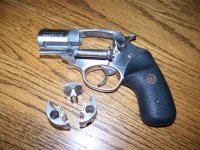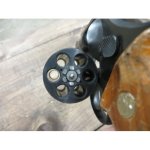Stopsign32v
Member
- Joined
- Jul 4, 2012
- Messages
- 829
- Reaction score
- 838
Hear me out...
What I'm talking about is the 360J which is actually a magnum frame with a .38 special cylinder. It even has the flame cut shield like the M&P .357.
So with that said, what would happen shooting a .38 special casing loaded to .357 magnum charge? I'm curious
What I'm talking about is the 360J which is actually a magnum frame with a .38 special cylinder. It even has the flame cut shield like the M&P .357.
So with that said, what would happen shooting a .38 special casing loaded to .357 magnum charge? I'm curious


